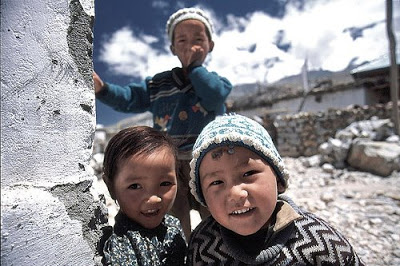Learning in Ladakh

 Sonam Wangchuk founded the Students’ Educational and Cultural Movement of Ladakh (secmol), at Phey (near Leh) in 1988. The school was set up after he noted the high failure rate of Ladakhi students which was leading to high rates of unemployment.
Sonam Wangchuk founded the Students’ Educational and Cultural Movement of Ladakh (secmol), at Phey (near Leh) in 1988. The school was set up after he noted the high failure rate of Ladakhi students which was leading to high rates of unemployment.Eversince Ladakh was merged into Jammu and Kashmir in 1947, the official language of Ladakh, like the rest of the state, has been Urdu. Languages of instruction in primary schools are Hindi and Urdu, neither of which are spoken by children here in their daily lives. Children in Ladakh also begin to learn English very late, only five years before their school exams in English. Consequently, the students have difficulty expressing themselves in exams and the failure rate is high. Since independence, the graduation rate in Ladakh has varied from 0 to 5 percent.
Elementary school curricula were built on mainstream Indian motifs and contexts the children did not understand. Teachers were neither trained nor supervised, and this led to corruption of the system.
Responding to what he sees as a critical need to involve local communities in educating their children according to their own language and way of life, Sonam has organised citizens across the region to monitor and participate in school activities.
Building on that foundation, secmol then launched Village Education Committees. The villages that want teacher training are asked to pay for it. Each villager contributes a little towards the total amount. These contributions ensure the villagers’ enthusiasm in the process of change and secure their future roles as monitors of the schools. secmol works with the committees and with new teachers to introduce curricula with local motifs and contexts, including new methods in teaching science and math.
According to secmol’s strategy, the training of teachers is accompanied by an emphasis on the inherent flaw in the education system — the foreignness and poor quality of the curriculum. Through Sonam and his team’s advocacy efforts, the government introduced English at the primary level in 1992, a move especially important because there is still no universally accepted version of written Ladakhi.
A milestone in secmol’s work came with the building of a central government residential school at Durbuk village. Everyone in the community put in at least one day’s labour to build the school. Because the buildings were insulated for winter use, they were able to implement a path-breaking change in the educational cycles. While children in Durbuk used to spend their school break in idleness during winters, they now are able to study through this season.
Read the entire story here. You can visit their website here.
Image Source: PIXistenz








